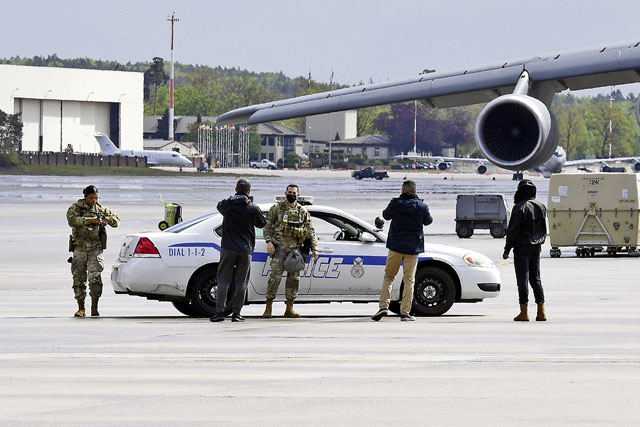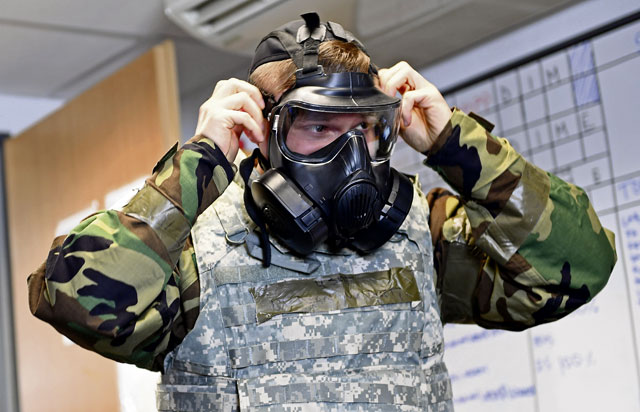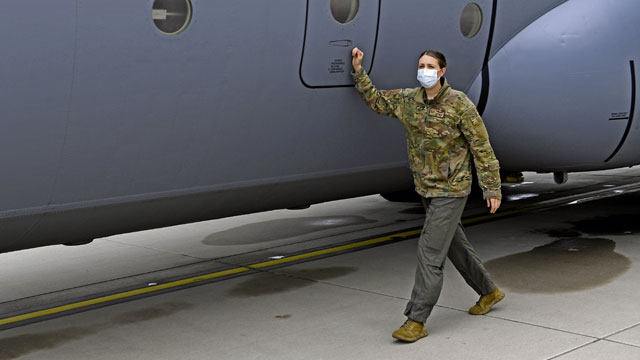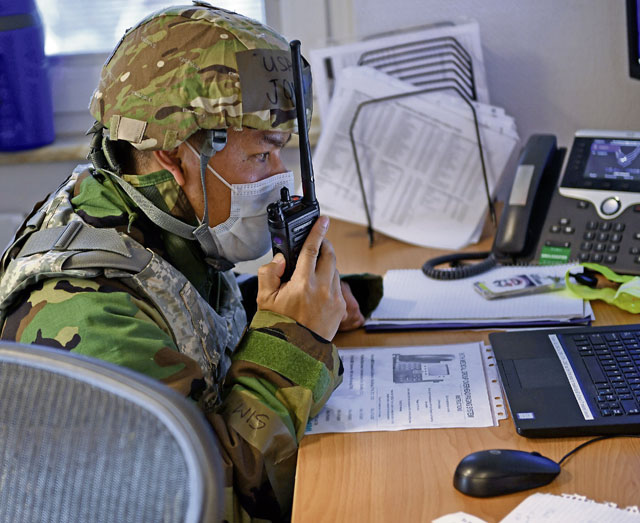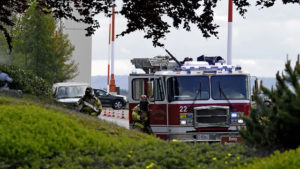
Ramstein Airmen concluded Operation Varsity, a week-long exercise testing the base’s ability to respond to a variety of scenarios, on May 21.
The exercise began May 17, simulating multiple scenarios including air attacks, unauthorized entry to the flightline, ground attacks, and responding to unexploded ordnance.
“The purpose of the exercise is to assess the wing’s readiness and the wing’s ability to execute the mission and also to train our Airmen,” said Master Sgt. Stephanie Coronado, 86th Airlift Wing Inspector General readiness planner. “We hope that Airmen and leaders across the wing are able to gain confidence in their equipment, processes, procedures, and themselves. We also hope that they identify areas where they can improve. The goal is to prepare Airmen to meet whatever tasks or challenges they may face in day to day operations or in combat environments.”
Airmen were put to the test during the exercise, which was the first of its kind since October 2020.
“Over the course of the exercise, I saw that Airmen were able to get more comfortable performing tasks in their (mission oriented protective posture) gear and were able to accomplish missions under contested environments without having too many hindrances,” Coronado said. “Everybody knows what they’re supposed to do and how to do it. And as an Air Force as a whole, we do an exceptional job of coming together and accomplishing the mission, regardless of what’s thrown at us.”
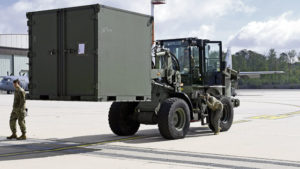
During one scenario, the 786th Civil Engineer Squadron had a multitude of training events thrown their way, including a burning building, search for missing personnel and unexploded ordnance.
“Exercises like this allow us all to come together and work together, have the communication flow down from the (crisis action team) to the (emergency operations center) out to the groups and then down to the appropriate levels,” said 1st Lt. Christopher Locke II, 786 CES Explosive Ordnance Disposal flight commander. “Getting those organizations to talk to each other and get the kinks worked out, so they understand what works, what doesn’t work, how they can improve,” Locke continued. “That enables the wing to work more effectively during world situations.”
Getting that practical experience is something that Locke says makes a big difference in what Airmen take away from training.
“As we all know, (computer-based training) is great, but until you actually get out and do something, it’s just a CBT,” Locke said. “Getting everyone trained up is a lot different when you’re in the classroom. But when you hear the alarm sound and you have to get into your MOPP gear, that’s really when you get to see if you understand what you’re doing. Especially with organizations like the fire department, EOD and security forces, this is a great time to get hands-on training in a safe environment where they can test their abilities.”
The OV series of exercises are scheduled to continue later this year.
